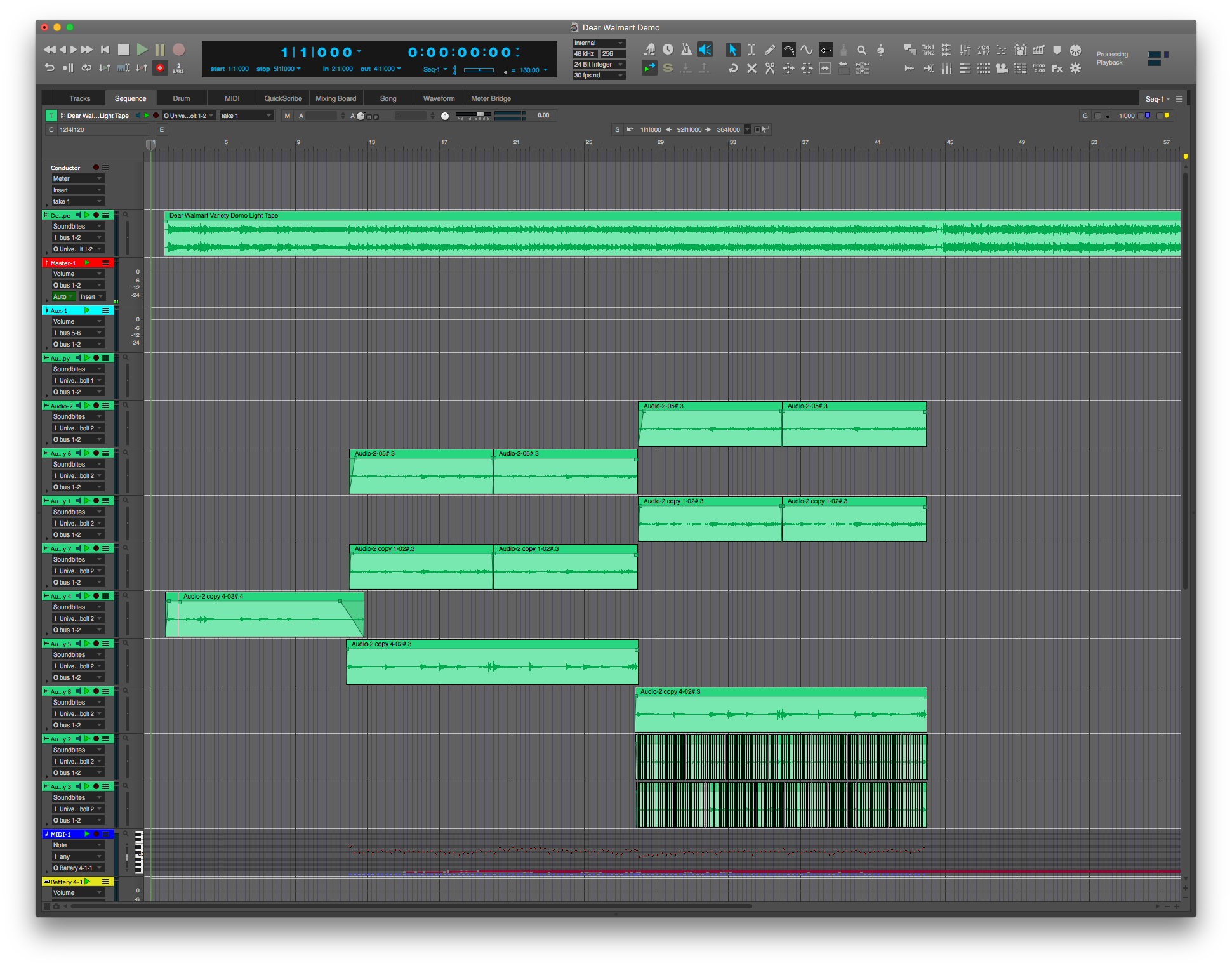
Process of Demoing to "Audition" for a Documentary Project
I wanted to pull together a recent example of what demoing is and how it works with indie film music. This all was created this week for a documentary feature film that I have been in the running for as a composer.
Trust
As a composer, it's difficult sometimes to figure out how to get a producer or director to trust that you will take the project they have been with for literally years and have the last creative emotional touch. The music in a film is the last element that can dramatically change the story. Naturally, if a film is someone's baby so-to-speak, it's up to them to trust me that I'll make it better when they let me babysit it.
There's always a give and take with filmmakers. Why should they trust me if they haven't worked with me before? They shouldn't, except that the demos on my site should prove to people that I know something about writing something music related. At least I would hope. The trick is, a demo reel on a website doesn't show how the emotional elements in the music could interact with the character or the picture.
With a composer, trusting the producer or director will come through is also another battle. What if you write music and don't get paid? What if you write music that doesn't deliver to the standards they are paying for? There's a slight tug-o-war that happens, and the intention I try is to find a balance that pleases both parties. The end result is we both want the film to succeed and feel cohesive.
Sometimes the question for filmmakers is: How do I hire someone I have never worked with and know they won't waste our time and money? Often filmmakers are on tight deadlines leading up to film festivals they want to submit to. I don't want to get in the way of those either.
Because of this trust struggle, often an agreed demo is in store. A demo usually is a short piece around 30 seconds to a minute used to demonstrate something about how it could be scored. It could be a fully mixed, recorded track or just a sketch on piano outlining how the notes would interact.

Note this isn't how my actual listening sessions look like, I just thought it was funny.
Demo 1
Here's an example of Demo 1 that I wrote without having the picture to watch. It was just based on keywords from the producers. I always over-deliver on my demos, showing that I want the project and that it's not just a hassle and liability. There was miscommunication for this demo as I thought what was needed for the film was a larger instrumental acoustic pop sound.
It turns out due to the nature of this documentary, the sound was too uplifting. The notes were that it would work for a scene later in the movie, but the opening was too positive. That's when I went with the next approach.
Demo 2
This is what I call an insomnia demo. I had spent the night before as an all-nighter. Staying up messing with plugins to write the next day. I should have just slept. This turned out to take too much time, be too simple and not as thoughtful as I usually am with writing.
I wanted to note that I was writing off of the picture, but only from an online video. It wasn't synced to music in my Digital Audio Workstation session.
As soon as I woke up, I immediately wrote the producer that I am starting a third demo because I wasn't happy with the second one and to disregard it for now. The thing it captured was a sparse loneliness and not as uplifting. It's also distracting over dialogue.
This is when I go to Demo 3.
Demo 3
Demo 3 is a multi-part demo series. After waking up, I started scoring to picture. That's because I took snippets of the film and scored directly to it. It works so much better for the documentary because it's raw, doesn't interfere with dialogue, I actually wrote it around the dialogue. It feels so much more watered down than the others because if it were more involved it would be turned down and basically pushed to the side to keep the dialogue stronger.
Each demo represents a different interviewee in the documentary. They are similar but the settings and overall feeling is really spot on in my opinion.
Demo 3c is a just hit on the main title of the film. Just to show stylistically how it could tie itn to the acoustic instruments.
Taking their notes and thoughts on these seriously I got an email back "This was perfect. So beautiful. I cried." Basically, I got the gig.
Conclusions
If you look at the amount of work, it may seem discouraging that I'm doing this demo (it was paid minimally which is unusual as demos are usually not paid).
The piece lengths are as follows:
Demo 1 2:46
Demo 2 2:37
Demo 3a 1:08
Demo 3b 1:23
Demo 3c 0:27
This shows how I overperformed on number of demos and the length of each demo. I believe in the idea to underpromise and overperform. It works as a gift for them, and a gift for you because they respect and want to use you.
Steemians, I hope you enjoyed this short piece on how I did a demo for this documentary which won me the gig. I might do some process videos for the writing process of the project. If I can get the producers to approve me showing at least the music for it!

